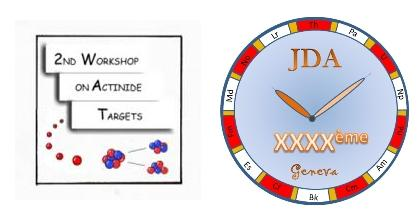Speaker
Description
Summary
High levels of radionuclides are usually found in the surface soil and vegetation of areas affected by uranium mining and milling. .It is also important to understand the behavior of natural uranium in the environment (e.g., mobility, transfers, translocation), because such information can be used to develop, to test models and to obtain the associated parameter values appropriate for radiological assessments [1]. Accurate measurements of the total radionuclide concentration in contaminated soils are required to assess their potential risk. Migration and accumulation of contaminants (including radionuclides) in the soil-plant system is complex, involving processes such as leaching, capillary rise, runoff, sorption, root uptake and re-suspension into the atmosphere. Assessment models commonly utilize a soil-plant concentration ratio, referred to as a transfer factor (TF), to estimate the transport of radionuclides through the food chain [2]. This ratio describes the amount of radionuclide expected to enter in a plant from the soil. Factors such as soil characteristics, climatic conditions, type of plants, part of the plant concerned, physico-chemical form of the radionuclides and the interfering elements can all influence the TF values [3]. In the present study, centered on the around disused uranium mine located in the Baita region in the West of Romania, two compartments are being considered: soil and vegetation. The aim is to investigate the association of the natural uranium (234U, 235U and 238U) with each compartment and the possible transfer between them. The vegetation samples at each point were collected from the surface the tailing near a uranium mine at which the soil sample had to be removed. In all cases, only the aerial fraction was sampled. The samples were carefully washed in the laboratory in order to remove all the adhered soil particles. Ten sampling campaigns (soil and vegetation) were performed during an one-year period. Each sample was dried at 1050C, ground, and homogenized. Approximately 100g of samples were hemetically closed in plastic beakers and stored for about 40 days to reach radiaoctive equilibrium with the radon daughter. The plant and soil samples were analyzed by gamma-spectrometry using CANBERRA HPGe detector with carbon epoxy window, with a resolution of 1,8 keV at 60Co 1332,5 keV line and approximately 50% relative efficiency, peak (59,5keV) efficiency 6,62%. Efficiencies of the detector at each photon energy are calculated using the specific software Canberra Genie 2000, ISOCS. For both type of samples the total aquisition time was 200000seconds. Finally, were compared to results obtained by gamma spectrometric measurements with those obtained by ICPMS at ITU Karlsruhe.
References
[1] F. Vera Tome et. al., Journal of Environmental Radioactivity, 65 (2), 161-175, (2003).
[2]Mirjana Stojanović et. al., Water, Air and Soil Pollution, 200 (1-4), 101-108, (2009).
[3] S.B. Chen et. al., Journal of Environmental Radioactivity, 82(2), 223-236, (2005).
[4] IAEA, Guide Book. Tehnical Report, 295, (1989).
[5] A. Martinez-Aguirre et. al., The Science of the Total Environment, 173, 203-209, (1995).




